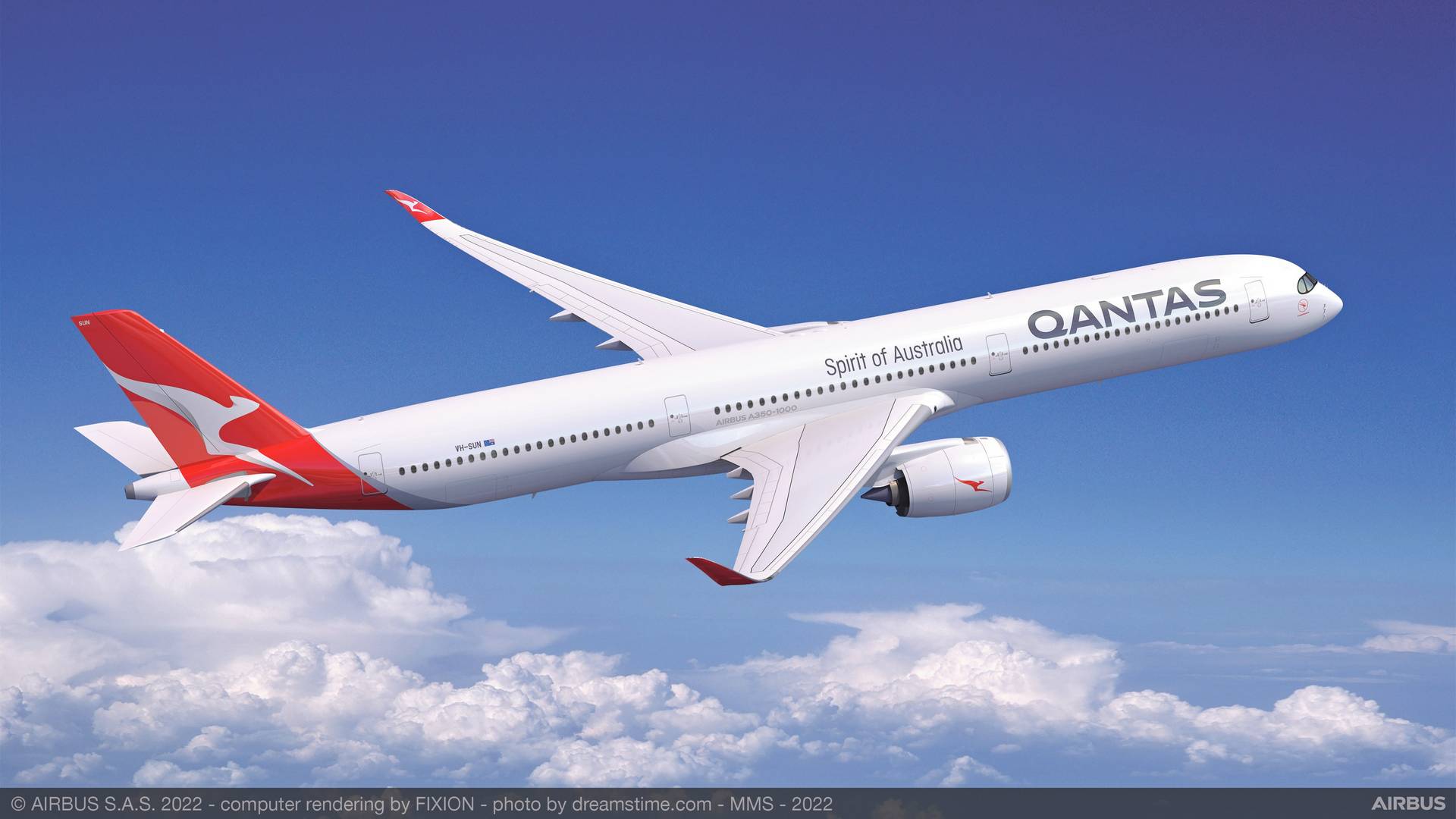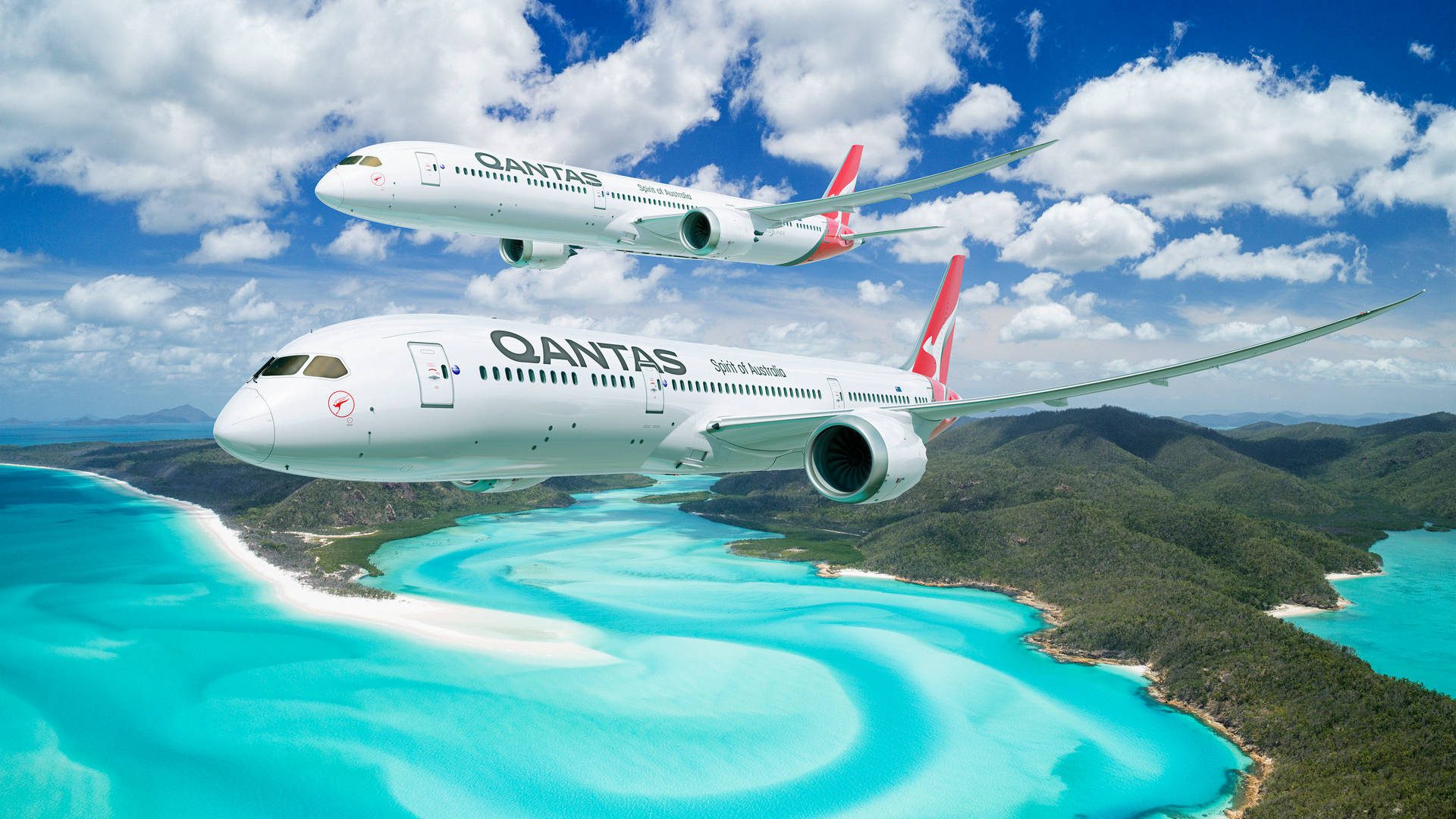Qantas just placed more orders for the 787 and A350 widebody airliners, as it plans for its future after the much-loved A380 double-decker.
On Wednesday the 23rd of August Qantas announced new widebody orders from both Airbus and Boeing. The Australian carrier already has the 787 in its fleet and has existing orders for the A350. So in a sense, new orders for both aren’t particularly surprising.

However, the news of which aircraft the airline will be replacing with the new jets will be disappointing for some passengers. Qantas is an Airbus A380 operator, with ten of these jets in its fleet. As with many other carriers, its A380s have a loyal following.
The new orders of the airline consist of twelve Airbus A350s and another twelve 787s. The A350s will all be the longer A350-1000 variant. On the Boeing side, the airline is splitting the order between four 787-9s and eight 787-10s.

A More Flexible Fleet?
The 787s will have GEnx engines, while the A350-1000s will come with Rolls-Royce Trent XWBs – the only engine option for the type. In addition to the A380, Qantas will use these aircraft to start replacing its A330-200s and A330-300s. Qantas currently doesn’t have orders for A330neos.
The new 787s will start arriving in 2027, with the A350s following shortly thereafter. In addition to these firm orders, the airline also has an undisclosed number of options for more. This makes sense, as the total size of the new firm orders (24 jets) doesn’t even cover the Qantas A330s (26) – never mind the A380!

We have previously looked at how the A380 realistically needs its operators to use the Hub & Spoke operating model if it is to make financial sense. The aircraft’s size makes it hard for operators to keep it full and profitable around the year.
Qantas After The A380 (and the A330)
Gulf carriers (e.g. Emirates) can make the A380 work. Thanks to Australia’s location, Qantas also has large numbers of passengers, traveling all year around, making the A380 a sensible choice. The airline’s A380s are currently just 14 years old on average, but Qantas needs to plan for the future.

We have also seen that Qantas has previously picked a version of the Airbus A350 for Project Sunrise, its ultra-long-haul, non-stop trips. But between its 787 and A350 orders, the airline seems to be re-adjusting to a fleet of smaller but more flexible widebodies.
But it will be interesting to see if Qantas will order these types in enough numbers to fully replace its A380 and A330 fleets. Or, if some A330neo orders will follow. The airline’s engine choice may be a clue.

Rolls-Royce Trent engines are available for the 787, and have a lot of commonality with the A330neo Trent variant. But again, Qantas picked the GEnx for its 787s. However, this could simply be because the airline already has 14 787-9s with GEnx engines. A330neos are only available with Rolls-Royce Trent engines.



